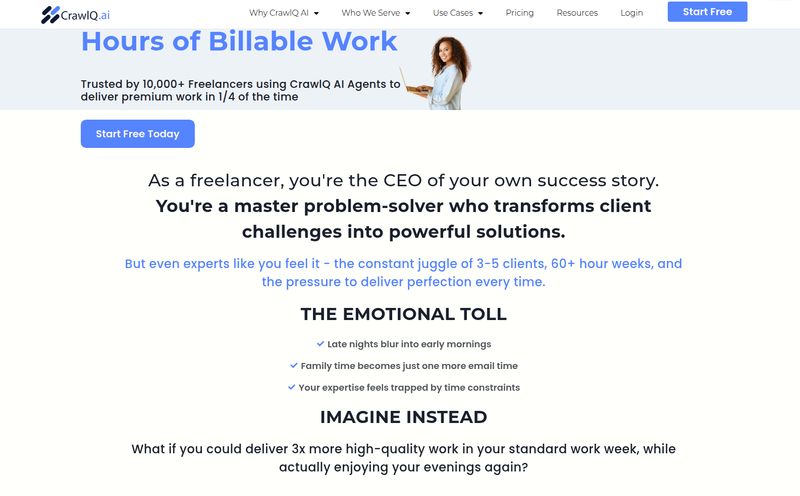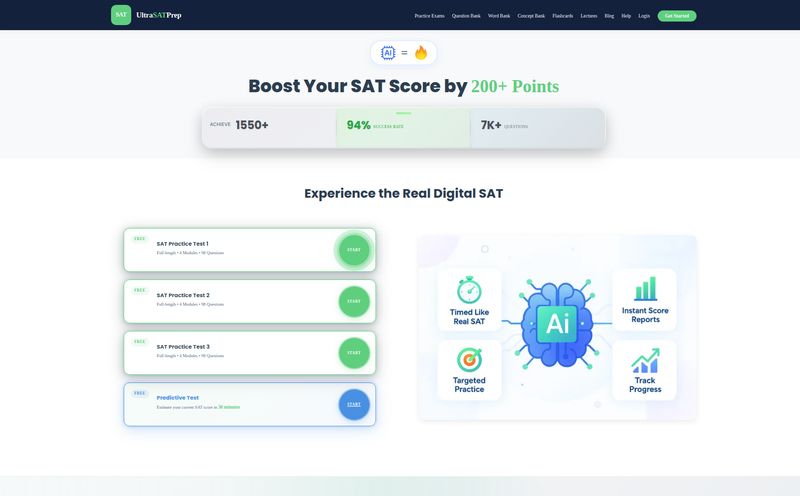If you've ever tried to create a custom interactive map for a blog post, you know the pain. The deep, spiritual pain. You start with a great idea: “I’ll map out the best doughnut shops in Portland!” Then you find yourself tangled in the ninth circle of spreadsheet hell, trying to import a CSV into Google My Maps, only for it to throw a cryptic error. An hour later, you’ve given up, and your readers get a boring bulleted list instead.
I've been there. More times than I care to admit. For years, making a simple, good-looking interactive map felt like it required a data science degree and a whole lot of patience. So, when I first heard about a tool called Textomap that promised to create maps from just... text? I was skeptical. Very skeptical. But also, incredibly intrigued.
Is this the tool we've all been waiting for? The one that finally makes map-making easy and, dare I say, fun? I had to find out.
What Exactly is Textomap? (And Why Should You Care?)
So what's the big idea here? Textomap is an online tool that turns your words into interactive maps. That’s it. That’s the magic trick. You can feed it a simple list of places, a block of text, a prompt for its AI assistant, or even a CSV file (if you must), and it spits out a clean, embeddable map.
Think of it less like a complicated GIS program and more like a clever translator that speaks both human and cartography. It's built for speed and simplicity, taking a task that used to be a whole afternoon's project and shrinking it down to a few minutes. For content creators, local SEOs, and small business owners, this is a pretty big deal. It's about taking location data out of boring lists and putting it into a visual, engaging format that people actually want to interact with. Faster.
Putting Textomap to the Test: My First 5 Minutes
To give it a proper shakedown, I decided to create a map of my personal “Top 5 Must-Visit Indie Bookstores in New York City.” I didn’t want to mess with spreadsheets or complex inputs. I just wanted to see if the core promise held up.
I signed up for the free account and was greeted with a clean, minimalist interface. I chose the “AI Assistant” option and typed in: “Create a map of these 5 bookstores in NYC: The Strand, McNally Jackson, Books Are Magic, Three Lives & Company, and Argosy Book Store.”
I hit enter. It churned for maybe ten seconds. And then... poof. A map appeared. With all five locations perfectly pinned. I could click on each one, and it had already pulled basic info. I was genuinely impressed. From login to a functional map, it was probably under two minutes. No joke.
I then spent a few more minutes customizing the pins, adding my own little descriptions for each store and changing the pin colors. It was all drag-and-drop, point-and-click easy. The result was a professional-looking map that was ready to be embedded right into a blog post.

Visit Textomap
The Features That Actually Matter for Marketers and Bloggers
Okay, it's fast. But what can it really do for those of us obsessed with traffic, engagement, and conversions? After playing around with it for a bit, a few features really stood out.
The AI Map Assistant: Your Brainstorming Partner
This is more than just a party trick. The AI assistant is a fantastic content ideation tool. Stuck for a local blog post idea? Just ask it to “map the best dog parks in San Diego” or “create a historical walking tour of Boston's Freedom Trail.” It instantly gives you a visual starting point for your research and your article. It’s a way to break through writer’s block by thinking visually first.
No More Spreadsheet Hell
I can’t say this enough. The ability to just copy-paste a list of locations from an email or a document and have it work is a game-changer. For years we've been told that data needs to be perfectly structured in rows and columns. Textomap just... gets it. This lowers the barrier to entry so dramatically. You dont have to be a data wizard to create a useful map, which I love.
Embedding Maps That Don’t Look Terrible
An interactive map is a fantastic way to boost on-page user engagement. When people are clicking around on your map, they’re spending more time on your page—a positive signal to search engines. According to experts at Moz, these kinds of engagement signals are increasingly important for SEO.
Textomap’s embeds are clean and responsive. You can customize the pins with images, short descriptions, and most importantly, links! Imagine a map of “Our Favorite Local Businesses” where each pin links out to that business’s website. Or an affiliate post mapping out travel gear, with each pin linking to a product page. The possibilities are pretty cool.
Okay, Let's Talk Money: The Textomap Pricing Tiers
Naturally, the next question is, what's this going to cost me? Textomap has a pretty straightforward pricing structure, ranging from free to enterprise-level.
My take: They've structured this in a way that makes sense. You can actually try it and use it without pulling out your credit card, but the paid plans are where the real power is for anyone serious about content.
- Free Plan ($0/month): This is your test drive. You can create unlimited maps, which is great, but you’re capped at 10 saved maps, 10 shared map views a month, and only 10 locations per map. It also has ads. It’s perfect for a one-off project or just to see if you like the workflow.
- Basic Plan ($8/month): In my opinion, this is the sweet spot for most bloggers, freelancers, and small businesses. For eight bucks, you get unlimited saved maps, unlimited locations, unlimited embeds, and a much higher view count (500/month). You also get the crucial ability to import/export CSV files and export to Google Maps.
- Pro Plan ($19/month): This is for the power users. If you have a high-traffic site or you're creating maps constantly, the 3,000 map views per month and higher character limits per map will be worth the jump.
- Enterprise (Custom Pricing): This is for large organizations that need custom limits, support, and integrations. The big leagues.
The Not-So-Great Stuff: Where Textomap Stumbles
Look, no tool is perfect. While I’m pretty high on Textomap, there are a few things to keep in mind. The limitations on the free plan are, well, limiting. The 10-saved-maps cap hit me faster than I expected, and the ads are a bit of a bummer, but hey, it's free. What can you expect?
Also, while the AI is clever, it's not a mind reader. For very obscure or similarly named locations, you might have to go in and manually tweak a pin’s position. It’s not a major flaw, more of a minor niggle in an otherwise smooth process.
My Final Verdict: Is Textomap Worth It?
So, do I think Textomap is the answer to our map-making prayers? For a huge number of us, I think the answer is a resounding yes.
This isn't a tool for creating a complex geological survey or a multi-layered data visualization for a scientific paper. But that's not what it's trying to be. It's designed for communicators—people who want to share information about places in a clear, fast, and visually appealing way. And at that, it absolutely excels.
If you're a blogger, a local SEO specialist, a journalist, or a small business owner who has struggled with maps in the past, I genuinely think you should give Textomap a try. It removes the technical friction and lets you get back to what you do best: creating great content.
Frequently Asked Questions
- Can I use Textomap on my phone?
- Yes! It works right in your mobile browser. I tried it on my iPhone and while the screen is a bit small for serious editing, it's totally possible to create a quick map on the go.
- Does Textomap help with local SEO?
- Indirectly, yes. By creating a great user experience and increasing the time visitors spend on your page, an embedded interactive map can send positive signals to Google. It's a great addition to any local landing page.
- How good is the AI location finder?
- It's surprisingly accurate for most common requests, like famous landmarks, cities, or businesses with a Google Maps presence. For your secret fishing spot, you might need to drop the pin manually.
- Can I export my map data from Textomap?
- You can on the paid plans (Basic and up). You can export your data as a CSV file or even directly to Google Maps, which is a handy feature for backing up your work.
- Is the free plan really free?
- Yep, it's free to use forever. You'll just have to live with the limitations on views, saved maps, and the small ads displayed on the map.
- Can I customize the look of my map pins?
- Absolutely. You can change colors, add custom descriptions, images, and clickable links to each pin, which is great for branding or affiliate marketing.
It's More Than Just a Map
In the end, tools like Textomap represent a shift. They’re about making technology more accessible and letting creativity, not technical skill, be the limiting factor. We've gone from needing complex software to just needing an idea and a few lines of text. That's pretty amazing.
Stop making boring lists. Go make a map. It’s easier than you think.



